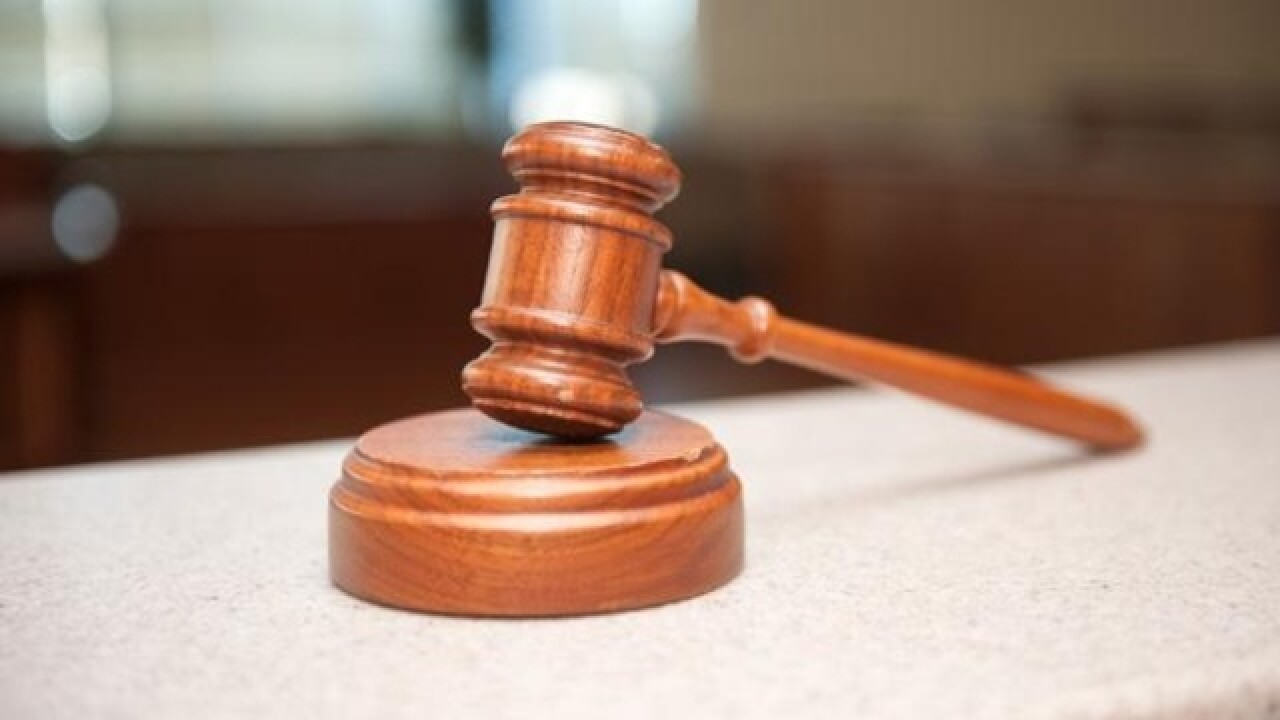In Focus:
- Red Flag Law Born Out of Tragedy
- What the Numbers Show About Florida's Red Flag Laws and Gun-Related Deaths
- Parkland Father Hails Red Flag Laws
- Polk County Sheriff Grady Judd Voices Support for Red Flag Laws
- Do Red Flag Laws Reduce Gun-Related Deaths?
On a recent Thursday in Hillsborough County, Judge Denise Pomponio temporarily stripped gun privileges from more than a dozen people.
Among them, a husband and father who didn’t show up to court but whose wife and son did and described the frightening moments before police arrived.
“I turned around, and the gun was pointing straight at us,” the wife told the court.
“I saw him flip the safety off and aim it right at me. If my mom wasn’t standing there, I think he would have shot me,” the son explained.
There was the story of a thirty-year-old who called 911 upset police hadn’t responded to his earlier call that his fiancé stole his meds.
“I’ll tell you what, I’ll grab the gun I got and go to the mall,” he told a 911 operator.
Another was of a young woman whose boyfriend called law enforcement after she went to bed drunk and woke up making suicidal comments.
“I’m not going to do anything. I just think my medication is causing crazy mood swings,” she told the cops at the time.
They are all among Florida’s most recent red flag recipients.
Red Flag Law Born Out of Tragedy
The red flag law was passed in 2018 following the deadly mass shooting at Marjory Stoneman Douglas High School in Parkland, Florida.
The law was created to prevent future mass shootings and curb gun violence by letting police seek a court order barring someone from purchasing or possessing a gun for 12 months if a judge determines they’re a threat to themselves or others.
Since going into effect in the Sunshine State in March of 2018, Florida judges have granted more than 12,000 risk protection orders, or RPO’s, according to Florida’s Office of State Courts Administrator.
When asked if she thinks RPO’S have saved lives, Judge Pomponio didn’t hesitate.
“Absolutely,” she said. “I mean, you got to try everything,” she told investigative reporter Katie LaGrone recently after she sat in on a number of RPO hearings.
What the Numbers Show About Florida's Red Flag Law and Gun-Related Deaths
In Hillsborough County, state records show between 2018, when the law took effect, and March 2022, judges granted nearly 1,000 risk protection orders.
But between 2018 and 2022, gun-related murders increased in the county from 52 in 2018 to 83 in 2022, representing nearly a 60% increase, according to firearm death data maintained by Florida’s Department of Health. During the same time, firearm suicide deaths went up only slightly, according to the state’s data.
It’s a similar trend for gun-related deaths statewide.
“An RPO injunction is a piece of paper. People need to remember that. Yes, we're glad they do it. But we always need to remember it's a piece of paper and people will find a way to do what they want to do,” Judge Pomponio said.
Advocates who pushed for Florida’s red flag law tout it as a major success.
"It's One of the Best Things We Did"
Tony Montalto lost his daughter, Gina, in the Parkland school shooting. He's been a huge advocate of Florida's red flag laws.
“It’s the proactive nature of this that we've seen that has been so effective,” he told LaGrone recently. “It’s one of the best things we did,” he said.
But even in the most proactive red flag counties, we’ve discovered there’s little to no evidence that proves Florida’s red flag law has done much to curb gun-related deaths.
"I'm Not Going to Apologize for Keeping People Safe"
To date, Polk County, a rural, conservative county about 45 miles west of Tampa, has issued over 2,300 risk protection orders, more than any other county in Florida.
The local sheriff’s office, led by long-time sheriff and Second Amendment supporter Grady Judd, files the lion’s share.
“I’m not going to apologize for keeping people safe or stopping people from killing themselves,” Sheriff Judd said.
The rate of gun-related suicides in Polk County dropped slightly between 2018 and 2022. The rate of gun-related murders shot up by more than 50%, from 2.8 to 4.3, state records show.
“It’s not a well-refined tool, but it's a tool,” said attorney David Carmichael.
He represents local police departments in Polk County that file risk protection orders. An initial skeptic of red flag laws, he now believes, despite what the numbers show, RPO’s are making his community safer.
“In this circuit, we haven't had a mass shooting since we've implemented this,” he said.
On the day we saw him in court, Carmichael was seeking an RPO against a 20-year-old who lives with depression and recently told his mom he wanted to buy a gun. The Judge granted the order. Most of the time, they do.
Do Red Flag Laws Help Reduce Gun-Related Deaths?
Dr. Shannon Frattaroli is a professor studying red flag laws at Johns Hopkins University’s Center for Gun Violence Solutions. Frattaroli said it’s too soon to determine if red flag laws prevent gun-related deaths, but early studies show for every 10-20 risk protection orders granted, approximately one death by suicide was averted.
“Those are pretty strong numbers. We've seen those consistently in two states now. So, early but promising,” Frattaroli said.




